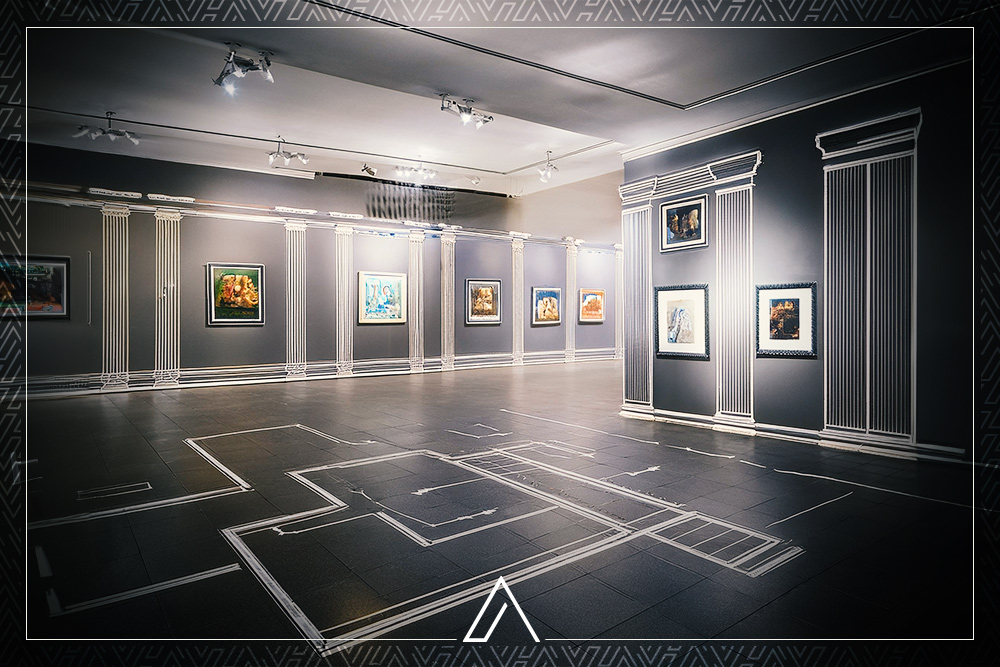Introduction
Planning an exhibition gallery is a meticulous process that requires careful consideration of several factors. From selecting the theme to arranging the artworks, every detail matters to create a captivating and coherent experience for visitors. This step-by-step guide will help you develop a comprehensive exhibition gallery plan, ensuring a successful and memorable event.
Understanding the Purpose of Your Exhibition Gallery
Before diving into the logistics, it’s essential to clearly define the purpose of your exhibition. Whether it’s to showcase contemporary art, celebrate historical artifacts, or highlight emerging artists, your purpose will guide every decision you make throughout the planning process.
Step-by-Step Guide to Exhibition Gallery Plan
-
Identifying the Target Audience
Understanding your target audience is crucial in shaping the exhibition’s content and marketing strategies. Consider the demographics, interests, and expectations of the people you want to attract. For instance, an exhibition aimed at art enthusiasts and collectors might focus on exclusive pieces, while one for the general public might include more interactive elements.
-
Defining the Theme and Concept
The theme of your exhibition should resonate with the audience and align with the purpose of the event. Whether it’s a solo exhibition for an artist or a group show exploring a specific genre, the theme will dictate the selection of artworks and the overall narrative of the gallery.
-
Selecting the Venue
Choosing the right venue is pivotal to the success of your exhibition. Consider factors such as location, size, and accessibility. The venue should complement the exhibition’s theme and provide ample space for the display of artworks while allowing for visitor flow.
-
Venue Layout and Design
The layout and design of the gallery should enhance the viewing experience. Start by mapping out the space and deciding how to arrange the artworks. Consider the use of lighting, colors, and spacing to create a harmonious and immersive environment.
-
Creating a Floor Plan
A detailed floor plan is essential for visualizing the exhibition layout. It should include the positioning of each artwork, pathways for visitors, and the location of key areas such as information desks and rest areas. Tools like SketchUp or traditional grid paper can help you create an accurate and functional floor plan.
-
Curating the Artwork
Curating involves selecting and organizing the artworks in a way that supports the exhibition’s theme and engages the audience. Whether you’re working with a single artist or multiple contributors, ensure that each piece contributes to the overall narrative.
-
Establishing a Narrative
The narrative is the story that your exhibition tells. It could be a chronological journey, an exploration of a particular style, or a thematic progression. Arrange the artworks in a way that guides the visitor through this narrative, making the experience both educational and enjoyable.
-
Labeling and Information
Provide clear and concise labels for each artwork, including the title, artist’s name, and a brief description. Consider adding QR codes that link to more detailed information or audio guides to enhance the visitor’s experience.
-
Budgeting and Fundraising
Budgeting is a critical aspect of exhibition planning. Outline all potential expenses, including venue rental, transportation, insurance, marketing, and staffing. Once you have a budget, explore fundraising options such as grants, sponsorships, and crowdfunding to cover the costs.
-
Managing Resources
Effective resource management is key to staying within budget. This includes negotiating with vendors, securing in-kind donations, and finding cost-effective solutions for materials and services.
-
Marketing and Promotion
Marketing is essential to attract visitors to your exhibition. Develop a comprehensive marketing plan that includes digital and traditional channels. Utilize social media, press releases, email campaigns, and partnerships with local media and influencers to generate buzz.
-
Creating Promotional Material
Design eye-catching promotional materials such as posters, flyers, and digital ads. Ensure that all marketing materials align with the exhibition’s branding and theme.
-
Social Media Strategy
Leverage social media platforms to reach a wider audience. Create content that highlights the exhibition’s key features, shares behind-the-scenes glimpses, and engages with potential visitors. Use relevant hashtags, collaborate with influencers, and consider running targeted ads to increase visibility.
-
Event Management
Managing the event itself requires careful coordination of all moving parts. This includes staffing, logistics, visitor services, and on-the-day management.
-
Staffing and Volunteer Coordination
Recruit and train staff and volunteers to assist with various aspects of the exhibition, from ticketing and information services to security and visitor assistance. Clearly define their roles and responsibilities to ensure smooth operations.
-
Visitor Services
Provide excellent visitor services to enhance the experience. This includes offering guided tours, providing accessible facilities, and ensuring the comfort and safety of all attendees.
-
Evaluation and Feedback
After the exhibition, take time to evaluate its success. Collect feedback from visitors, staff, and artists to understand what worked well and what could be improved for future events.
-
Post-Exhibition Analysis
Analyze visitor numbers, sales, and feedback to assess the overall impact of the exhibition. This information is valuable for planning future exhibitions and refining your approach.
In Conclusion
Developing an exhibition gallery plan requires a blend of creativity, organization, and strategic thinking. By following this step-by-step guide, you’ll be well on your way to creating a successful exhibition that captivates and engages your audience. Remember, the key to a great exhibition lies in the details, so plan meticulously, stay adaptable, and let your vision guide you through the process.
Bring your exhibition gallery plan to life with LAVAevents!
At LAVAevents, we specialize in turning visions into reality with our unparalleled event management services in Dubai. Whether you’re planning a grand corporate event, an intimate wedding, or a large-scale exhibition, our expert team is here to ensure every detail is flawless. Let us handle the logistics, entertainment, and hospitality, so you can focus on what matters most—making a lasting impression. Contact us today to start planning your next unforgettable event!






